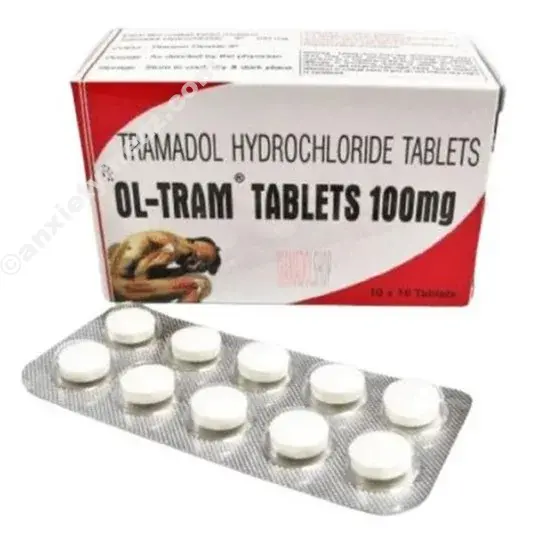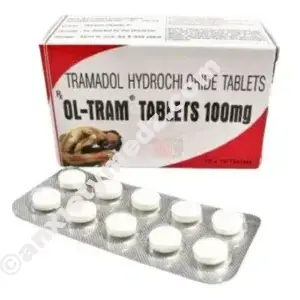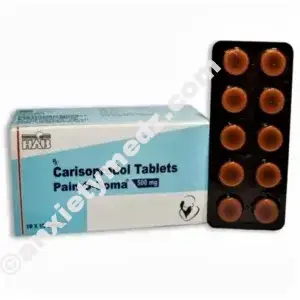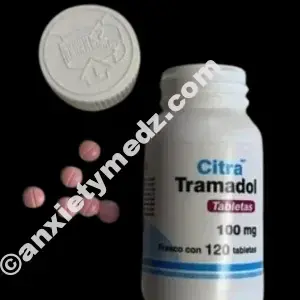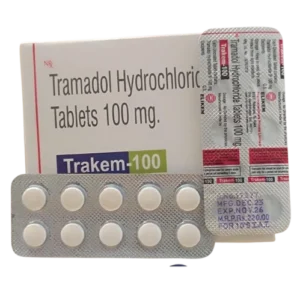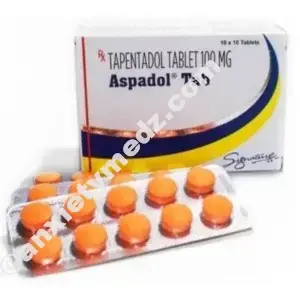What is Tramadol (Ultram)
Tramadol is a medication that is available on prescription and is indicated for moderate to moderately severe pain. It is a member of the opioid analgesics family that binds with some specific areas of the spinal cord and the brain. Tramadol, however, is often prescribed online for arthritis, fibromyalgia, and for post surgery pains. It is available in immediate-release or extended-release forms, so it is imperative to exercise caution when recommending its use as it is a habit-forming drug.
Primary Uses of Tramadol
The one primary objective of using tramadol is pain control. Its major indications include: Moderate to Moderate-Severe Pain: It is often used in pain because of soft tissue trauma such as surgery and arthritis, as well as for pain in osteoarticular regions after traumatic injury.
How does tramadol Work, and for how long?
Tramadol does its job by attaching itself to the pain receptors found in the brain and the spine which helps block out the pains perceived and also reduces the feeling of it. It also increases the brain’s production of neurotransmitters like serotonin and norepinephrine, which aid in pain relief. and norepinephrine in the brain that aid in pain relief.
Depending on the formulation, the duration of action of tramadol can range from immediate release to extended-release. Immediate-release tramadol typically has an onset of action within 1 hour of intake with its peak effects felt within 2-3 hours. The duration of action of immediate-release tramadol is usually 4-6 hours.
Extended-release tramadol addresses this limitation with a duration of action lasting approximately 12-24 hours. These formulations are especially useful for treating painful conditions that require continuous therapy for pain relief.
Efficacy
The efficacy of tramadol, like any other drug, has its limitations. Some individuals might be able to alleviate a quite considerable level of pain using tramadol; however, some other people may be able to get that much benefit from it. To enhance the efficacy of tramadol, you should take the drug exactly as prescribed by your doctor.
Moreover, the use of tramadol may be more beneficial when combined with a multifaceted approach to pain management through prescribed exercises, physiotherapy, or even some alternative medicine. However, it is imperative to raise any questions surrounding the effectiveness of tramadol with specialists.
Who can take tramadol?
1. Adults who have been given tramadol as part of pain management by a healthcare professional.
2. People with no previous bad reactions to tramadol or other opioids.
3. Cater to people with no past history of drug abuse or dependence.
4. Individuals who have no underlying health problems that could potentially rule out the use of tramadol, such as moderate to severe respiratory depression, acute alcohol use, or advanced disease of the liver or kidneys.
Who should be careful or refrain from using tramadol?
1. Children aged 12 years or younger should not be given the drug as it is not recommended for their use.
2. Lactating women – Tramadol should be avoided as breast milk has been found to induce its effect, which may affect the newborn infant.
4. People aged over 65 years because they might be prone to some of the side effects of tramadol, such as dizziness, confusion, and drowsiness.
5. Patients with a seizure disorder or those with epilepsy since tramadol can lower the seizure threshold and may increase the chances of having a seizure.
Talk to your physician or nurse about the medications you’re taking, your medical history, and any other health risks before starting tramadol. While tramadol can effectively manage pain, it isn’t the only option. Your healthcare provider can determine if it suits you and advise on safe, effective administration.
How to take
1. Dosage: Consume tramadol the same way as prescribed. The dosage will depend on your pain level, condition, and several other factors. Do not take tramadol exceeding the instructions given to you or take it more often than what has been prescribed to you.
2. Formulation: You can find tramadol as immediate-release tablets, extended-release tablets or oral suspension. Follow your doctor’s directions on the specific formulation you should take and how to take it.
3. Timing: Take tramadol with a full glass of water, with or without food, as prescribed. Do not crush, chew, or divide extended-release tablets; swallow them whole.
4. Avoid Alcohol: Alcohol should not be ingested while using tramadol as it could increase some of the side effects such as dizziness, drowsiness, or respiratory depression.
5. Monitoring: Observe and measure the level of pain you are experiencing and the effectiveness of tramadol. If you have concerns regarding the situation of the management including side effects, contact your healthcare provider.
6. Missed Dose: If you miss a dose of tramadol, take it as soon as you remember. However, if it’s almost time for the next dose, skip the missed dose and continue with your regular schedule. A missed dose should not lead to the taking of an extra dose in order to compensate for the missed dose.
7. Storage: Take precautions on the storage of tramadol by making sure it is stored at room temperature and in a place that is free from moisture and heat. Children and pets should not have access to this medication.
8. Disposal: Throw away unneeded or expired tramadol properly, following local recommendations or take-back programs to prevent misapplication or accidental’ swallowing.
Risks of Using Tramadol
Risk of Overdose: An uncontrolled intake of tramadol can lead to grave medical injuries, which may include respiratory depression, seizures, and even death.
Possible Side Effects: dizziness, nausea, drowsiness constipation and headache, flu like symptoms and many others. Some patients may report more pronounced side effects, such as severe mood and personality shifts and even allergic reactions.
Signs of Tramadol Application
Increased Tolerance: Less sensitiveness or receptiveness than normal, particularly to drugs.
Withdrawal Symptoms: Withholding tramadol from a dependent individual may lead to symptoms such as anxiety, irritability, chronic fatigue, and nausea
Craving: The patient may have the overwhelming desire or strong urges to use tramadol regardless of the possibilities of how dangerous it may be.
Loss of Control: The patient regulates the medication persistently and takes tramadol in higher concentrations or more often than recommended.
Neglecting Responsibilities: The patient is unable to reach goals at work or school or take care of the family and house during the treatment with tramadol.
Social Isolation: The individual may avoid clients, friends, and family or lose enjoyment in previously pleasurable activities.
Continued Use Despite Problems: Make the tramadol regimen even though there are already signs of harm or a negative health response as result of aberrant behaviors.
Risky Behavior: Doing things that can turn into dangerous acts, such as driving or machinery when ever that person is on drugs.
Secretive Behavior: The patient manages to conceal tramadol administration and avoids disclosing the medication use.
Can I buy buy ultram online without prescription ?
To buy Ultram online, first consult your doctor for advice. If they prescribe it, you can purchase Ultram 100mg online with that prescription. However, without a valid prescription, you won’t be able to buy Ultram 100mg, as it is a prescription drug.

